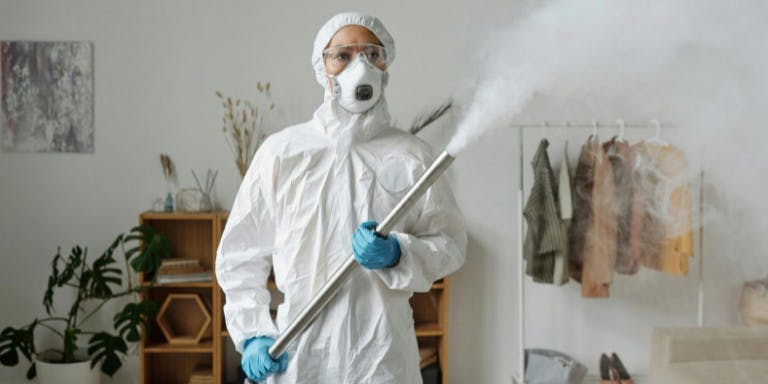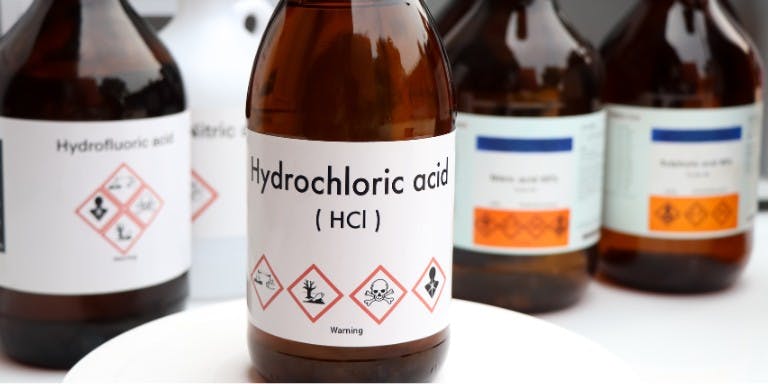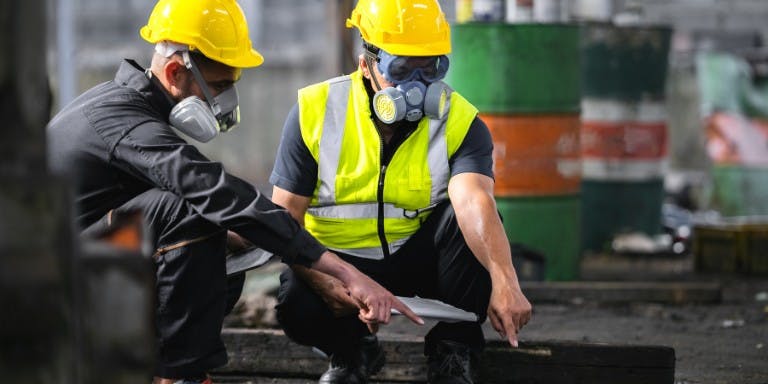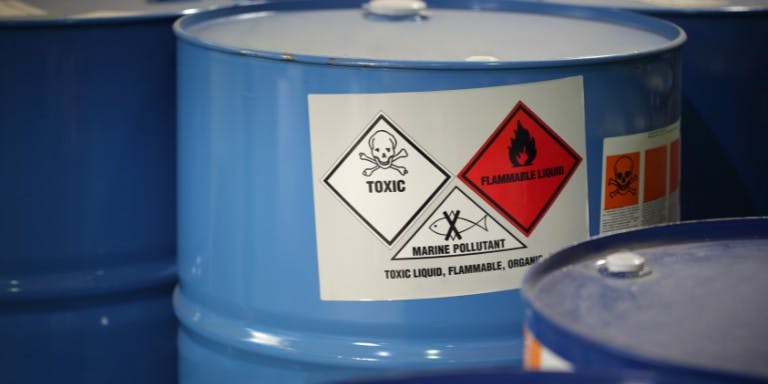First published on Thursday, March 20, 2025
Last updated on Thursday, March 20, 2025
Jump to section
When working with hazardous substances, the right PPE can make all the difference. Whether it’s chemicals, dust, or fumes, providing the correct protective gear isn’t just a legal requirement—it’s a crucial part of keeping your team safe and healthy.
So, what exactly do you need to know about PPE for COSHH and what PPE should be worn? Let’s break it down in simple terms.
Why COSHH PPE matters
Under COSHH regulations, as an employer, you are responsible for identifying hazards, controlling exposure, and providing appropriate PPE for chemicals and other hazardous substances. Without it, employees risk serious health issues, from skin irritation to long-term respiratory diseases.
PPE should always be the last line of defence. You must first consider other control measures, and collective controls, before relying on PPE. But when it’s necessary, it must be fit for purpose, properly maintained, and used correctly.
PPE types for COSHH
The type of PPE required depends on the substance and the level of risk. Here are the main PPE types and their specific applications under COSHH regulations:
Respiratory Protective Equipment (RPE)
In environments where hazardous substances are airborne, such as dust, fumes, vapours, or gases—RPE is essential.
The type required depends on the nature and level of exposure:
Disposable respirators (FFP1, FFP2, FFP3) provide basic protection against airborne particles and dust.
Half-mask and full-face respirators can be used for higher levels of protection against gases, vapours, and fine particulates.
Powered air-purifying respirators (PAPR) are good for extended wear and high-exposure environments.
To be effective, all RPE must be correctly fitted to the user’s face. It’s important to note that, face fit testing is a legal requirement for tight-fitting respirators to ensure an effective seal.
Eye protection
When working with hazardous substances that could cause eye injuries through splashes, dust, or fumes, appropriate eye protection is required:
Safety glasses can be used for low-risk environments where minor exposure is expected.
Goggles provide a secure seal around the eyes for increased protection against chemical splashes and airborne particles.
Face shields are recommended when there is a risk of full-face exposure to hazardous substances.
Skin and body protection
Many hazardous substances can cause skin irritation, burns, or absorption into the body. Protective clothing should be selected based on the specific risks:
Gloves: Different materials (nitrile, neoprene, PVC) offer varying levels of protection against specific chemicals.
Coveralls: Disposable or chemical-resistant suits may be required when handling hazardous liquids, powders, or biological agents.
Aprons and lab coats: Provide an additional barrier for less hazardous materials or short-duration exposure.
Foot protection
Footwear should protect employees from chemical spills, sharp objects, and impact hazards in relevant work environments. Options include:
Chemical-resistant boots to prevent absorption of hazardous liquids.
Steel-toe or composite-toe boots for protection against falling objects.
Slip-resistant or anti-static footwear where electrical or traction hazards are present.
Hearing protection
While not directly linked to the protection of hazardous substances in the workplace, if you’re your employees are working in noisy environments with chemicals (such as in industrial settings), ear protection may also be necessary.
Earplugs for moderate noise reduction.
Earmuffs for environments with sustained high noise levels.
What PPE should be worn?
The PPE required depends on the specific chemicals or hazardous substances in use. Here are some examples of PPE that could be used based on different workplace scenarios:
Handling corrosive chemicals (sulfuric acid) in labs
Chemical-resistant gloves (nitrile/neoprene)
Safety goggles or full-face shield
Chemical-resistant apron or lab coat
Closed-toe, chemical-resistant footwear
Working with silica dust in construction
FFP3 dust mask or respirator with P3 filters
Safety goggles
Heavy-duty gloves
Protective coveralls
Industrial cleaning (disinfectants and solvents)
Chemical-resistant gloves (PVC/nitrile)
Safety goggles or face shield
Waterproof apron or full coveralls
Respiratory protection in poorly ventilated areas
Spray painting and solvents in manufacturing
Full-face respirator with organic vapor cartridges
Nitrile gloves
Safety goggles
Protective overalls
Handling biological hazards in healthcare
Disposable nitrile gloves
Face mask (FFP2 or FFP3 for airborne risks)
Safety goggles or face shield
Disposable gown or apron
Pesticide handling in agriculture
Chemical-resistant gloves
Full-face respirator or mask with appropriate filters
Waterproof coveralls
Rubber boots
Choosing the right PPE
As mentioned, the right PPE will depend on the substance and level of risk. However, it’s important to remember, when selecting COSHH PPE, you should always make sure that:
It’s suitable for the specific hazard (always check safety data sheets for guidance)
It fits properly and is comfortable for the wearer
It meets the correct safety standards (EN 166 for eye protection, EN 374 for gloves)
Employees are trained on how to use, store, and maintain PPE
Providing the right PPE isn’t just about ticking a compliance box—it’s about protecting your workforce.
Regularly reviewing your COSHH risk assessments, ensuring PPE is in good condition, and training employees on its proper use will help keep your team safe from hazardous substances.
Get help with COSHH from BrightHR
You should always refer to safety data sheets and COSHH risk assessments to ensure the highest level of protection. But knowing where to start and which substances demand immediate attention isn't always obvious.
Our COSHH Compliance Checklist cuts through uncertainty in just 5 minutes. It pinpoints:
Which substances in your workplace carry the highest liability
Where your current documentation might fail inspection scrutiny
How your assessment process compares to industry standards
No vague advice. No generic warnings. Just clear identification of specific areas where improved documentation protects your team and your business. Complete your COSHH Compliance Checklist today!







